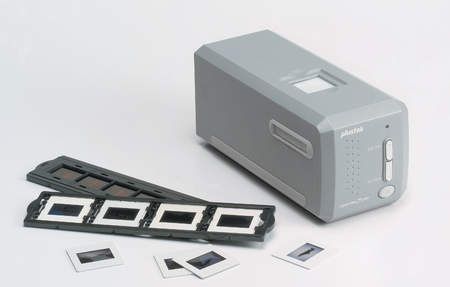So you've gone digital? But let me quess, you've got a shoe box full of photographs that just aren't getting a look in over your digital collection?
Our quick take
As dedicated film scanners go this one is cheap, easy to use and yet it still packs a respectable punch: so, here cheap means great value for money. If a dedicated film scanner is your bag and you’re on a tighter budget, the Plustek OpticFilm 7200i should definitely be on your list.

Plustek OpticFilm 7200i scanner - 3.5 / 5
| FOR | AGAINST |
|---|---|
|
|
Plustek hope to change this with its compact, dedicated, 35mm film or negative film scanner.
The 7200i is neat, compact, and simple to use and yet is equipped with enough resolution to get extremely large files should you require them. The addition of iSRD (Infrared Smart Removal of Defect) processing means you can clean up your scans on the fly, but this does extend processing times and can remove detail as well so use with care.
Connection is USB2.0 – there’s a single port on the back of the scanner – and via a supplied USB cable. Three main controls on the svelte scanner’s face (and a small LED for indication of the scanner’s state; on, off or working) are the Intelliscan button, which activates the excellent bundled SilverFast Ai iSRD software automatically and gets things going for you with all the advanced scanning features ready to rock.
Then below that there’s the aptly named QuickScan button, it activates the quick scanning function and automatically scans any originals mounted on either the mounted slide (up to four at a time) or film strip (strips of six at a time) holders at predefined settings. It then automatically sends the scanned files either to a location/folder on your PC or to another program/application such as the (also bundled) NewSoft Presto! PageManager program for further processing but all depending on your chosen QuickScan settings. Last up (or rather down, as it’s at the bottom) is the power button.
Interestingly, the film/slide holders are sent through the scanner cross-ways rather than down the (arguably, more usual) length of the scanner, meaning you need to allow desk space either side of the otherwise compact machine to allow for the film holders to protrude as they pass through.
Controlling the software is straightforward with "usual" scan set up choices such as type of original, resolution and bit depth to choose between. You can apply other processing (besides or as well as the iSRD bits and bobs) to the scan on the fly, such as brightness, contrast, and filter selections, helping save time later in an editing package such as Photoshop.
Scans are good rather than great but with up to 48-bit bit depth capability offering "trillions" of colours and with a respectable scan density of 3.3D, so detail is retained well in those darkened corners of your slides or negs. On the down side the scans can take an age if you’re looking to create a massive files for blow ups or you are running the iSRD processing which (depending on the levels you’re using) can add considerable time to a scan’s length.
To recap
A great little film scanner, one that is ideal for the enthusiast on tighter budget looking to digitise years’ worth of negs or slides
